The trip to Corvado National Park began with waking up at 4:30am to catch a 5:30am bus to La Palma, where I took. a collectivo taxi to Los Patos Ranger Station with the guide, Jose, and my two newly met hiking companions, Dan and Rachel, a young New Zealand/Australian couple one month in to a three month Central American trip similar to my own. We were put together by OsaWild, the agency through which I booked my tour. When I booked, I had to pay the two person minimum price, with the assurance that it was likely other people would show up that I could join and reduce my price. I was nervous about travelling with a couple, being the odd one out, and also their temperament and if they understood what they were getting in to. The bus ride was uneventful, and the colectivo ride from La Palma was a 45 minute long trip down a dirt road across several rivers.
After a short introduction from Jose, we were off into the jungle. We left at 6:45am and he planned on having us at Sirena Ranger Station by 3pm. The beginning of the hike started across a river and quickly climbed steeply into the jungle. Jungles are fascinating places full of a web of interconnected, symbiotic layers of life; the floor, the sub-canopy, the canopy, the emergents, all full of different kinds of life, all of them working together, whether they like it or not to create what I was seeing, kind of luke New York city. But all I was seeing was an undifferentiated mass of green that was to be our travelling companion for the next 7 hours. Ferns are nice, ceiba trees are nice, acacias are not nice(they have a symbiotic relationship with fire ants, brush against an acacia and expect to experience 72 hours of intense burning pain where the guardian fire ant bites you). But what we come to the jungle to see are the tapirs, the pumas, the anteaters, and the monkeys, mainly the monkeys. From the publicity I read of Corcovado before travelling, I guess I was half expecting a monkey and a tapir to be waiting at the trailhead to pose for a selfie with me.
Jose was an interesting a enthusiastic guide. Orignally from San Jose, he had three degrees, in Marketing, in Biology,and one I am forgetting, but certainly not related to the other two. I never asked his age, but he was probably about mine, in his late 30s. He was currently studying mushrooms on his own and trying to start a permaculture movement in Costa Rica, beginning with his own property, Sanctuario Gamba Gam, and combination of the town he lived in and his mother’s family name. You could call him a polymath or just a perpetual student, someone who couldn’t decided what they wanted to do with their life. He may have found it though in Osa; He had come here eight years ago and planned never to leave.
We saw a lot of birds. I’m not even going to bother to try and recall or make the effort to google all of them. If it’s not a toucan or a macaw, who cares? It was hot, but not worse than I was expecting. I was wearing long vented pants, while everyone else wore shorts. I was concerned about ticks. Ticks here are just an annoyance. not carrying any diseases like the United States variety, but anything that latches on to me and sucks my blood creeps me out, and I was willing to endure a little discomfort to prevent it. We saw our first monkeys an hour or two in; Spider monkeys, which would turn out to be ubiquitous in the park. As we stood underneath them, Jose explained that to guard their territory, they will drop things on you or even urinate. Dan, Rachel and I all stepped away from the tree. They had the bad form to be too high up in the branches to get pictures.
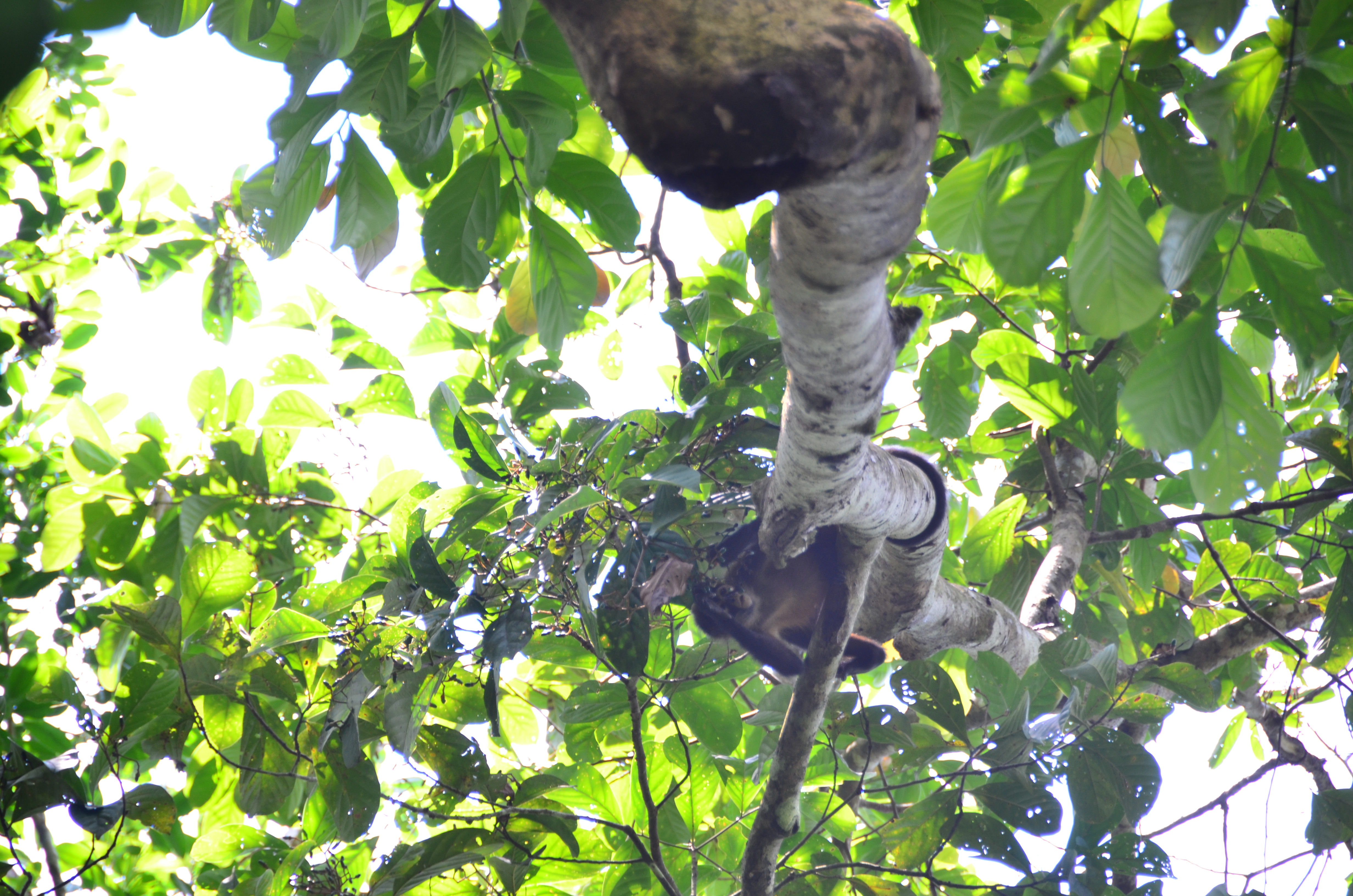
We stopped for a break by a river. I startled a Jesus Lizard, and watched it scamper across the top of the water. Dan and Rachel were proving to be strong, uncomplaining hikers. We didn’t talk much as we hiked. Rachel was a question asker, observant and fascinated by all she saw, which was great, and I am neither observant nor a question asker, stuck in my head as I am, thinking about things besides where I am at the moment, even when that moment is in a jungle, something I have never been and probably will never be again. We saw some oversized rats, more birds, more spider monkeys, fungus that fascinated Jose, a giant moth. We breaked for lunch at a river, the Rio Claro, around noon. I ate my rehydrated Mountain House, just add water and wait 10 minutes bag of chicken salad. Dan and Rachel had avocado, peanut butter and tortillas. I ate like a backpacker, they ate like people who had been travelling for a month in Central America and knew what they were doing.
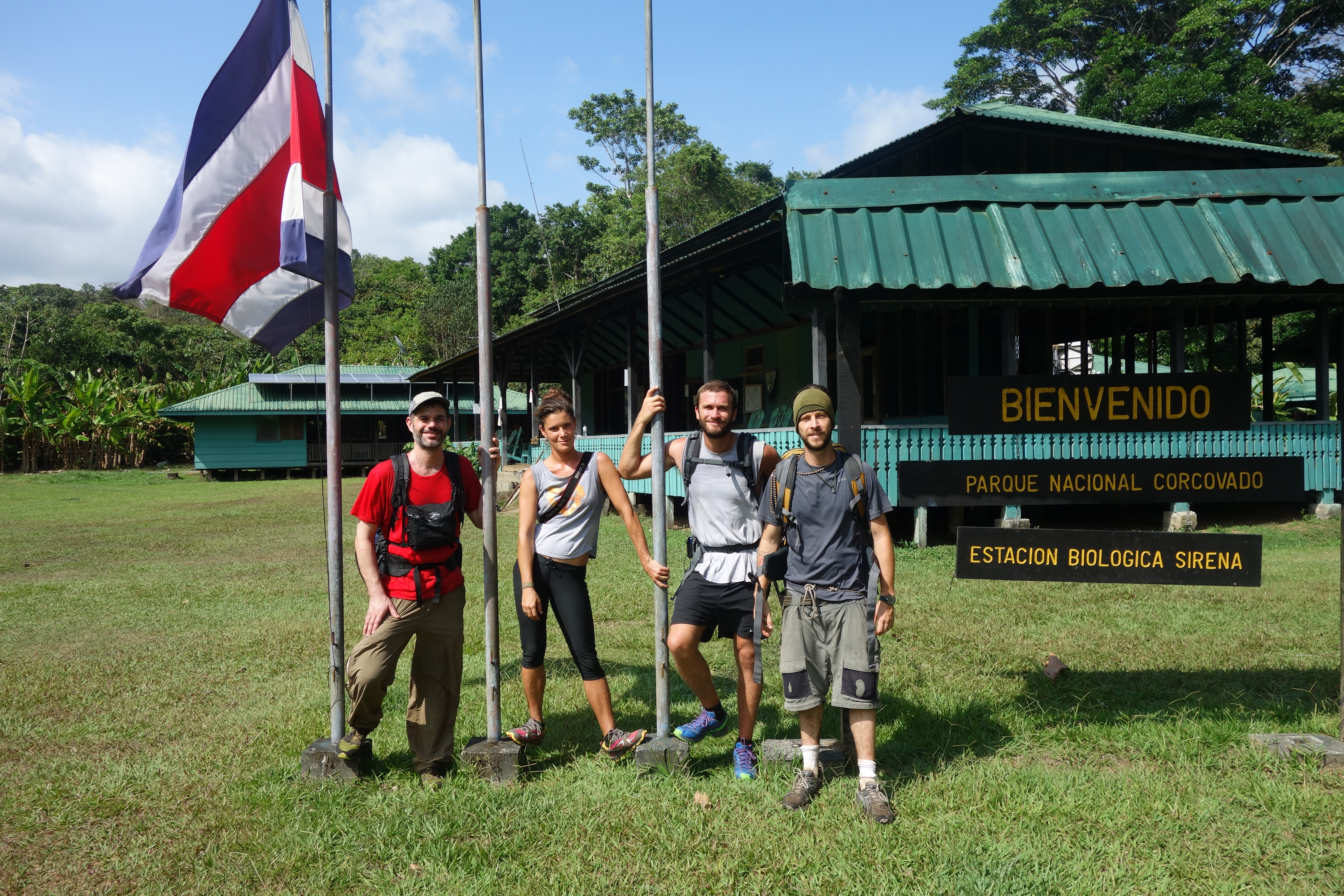
We arrived at Sirena at 2:15pm, ahead of schedule. I found a place to hang my hammock which wasn’t ideal, Jose showed Dan and Rachel to their spot on the tent platform, and we all had showers.
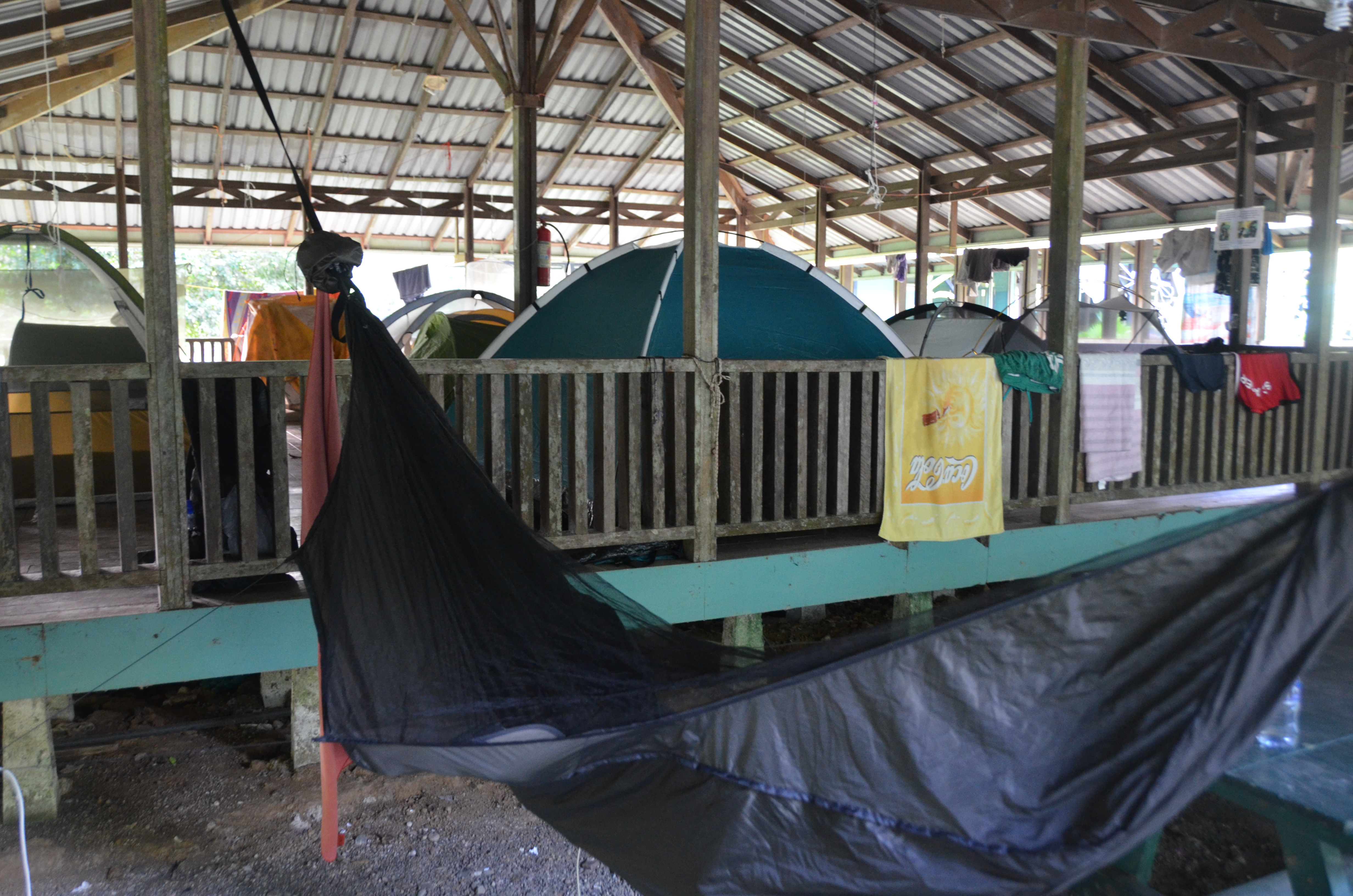
The shared bathrooms and showers weren’t terrible but about what you’d expect to find at a ranger station in the jungle. The rangers top priority was not cleaning the bathroom and showers and the guests first priority was to not bother treating respectfully something that did not belong to them and they’d only be using for a couple days. There were signs explaning that it was too difficult for the rangers to transport out all the trash, so you had to carry out your own. The bathrooms and the showers were easy, private places for people who didn’t feel like complying to hide their trash. Just another reminder that human beings are disgusting and should never be allowed to have nice things.
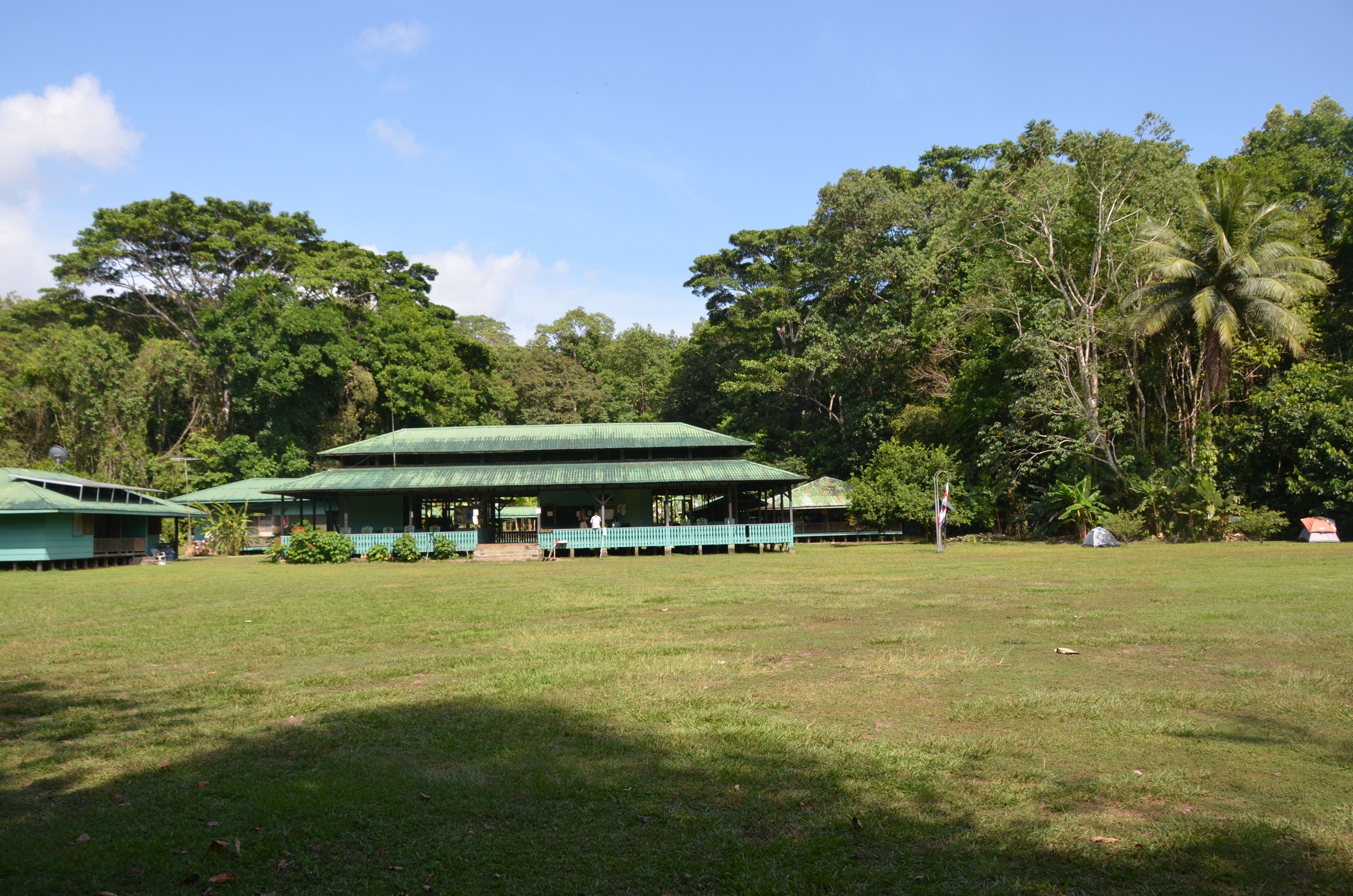
The evenings were for sitting on the broad front porch on benches and Adirondack chairs watching the sun set over the trees and listening the jungle come to life. The two times I do appreciate the jungle are at dawn and dusk. The station had free WiFi so many of our faces, including mine, were lighted by the ambient glow from our phones. I had to keep reminding myself to put it down and take in something I’ll probably never see again. I don’t blame people and I think the whole disconnecting thing, while useful occasionally, is more often an affectation. If it wasn’t, the affected disconnectors would just leave the rest of us to our connections and mind their own business instead of letting us know how much better they are than us for their sacrifice. Connection is good. Though I’d be lying by ommission if I didn’t think to myself sometimes, “Why don’t you put down the phone and just be here?” The sky darkens and the trees turn into silhouettes. The insects buzz and chirp becomes a white noise in the background, like the ocean, which can be heard underpinning the insects as the surf crashes only a couple hundred yards away. It’s only 7:40pm but the sound forces my eyes closed into a wake-sleep trance, and all at once I can hear distinctly the rangers on their porch next door joking with each other and the guides, this just another night for them, the conversations of the other campers, the guides spotting birds with their bincoluars and excitedly pointing out to each other an elusive toucan. Someone spots a tapir and baby tapir crossing the runway and all run down to see. The howler monkeys start up with their moaning roars, the macaw squawks a sound too ugly for such a beautiful bird and I hear the tinamu, a fat chicken-like ground based bird, sing a sweet melody it should really be forced to trade to the macaw. Spider monkeys call and bicker. At 8pm, they turn out the lights , and the stars come out in full, and you can walk out into the grass to see them better, and then return to the porch and pick the inevitable ticks from your ankles.
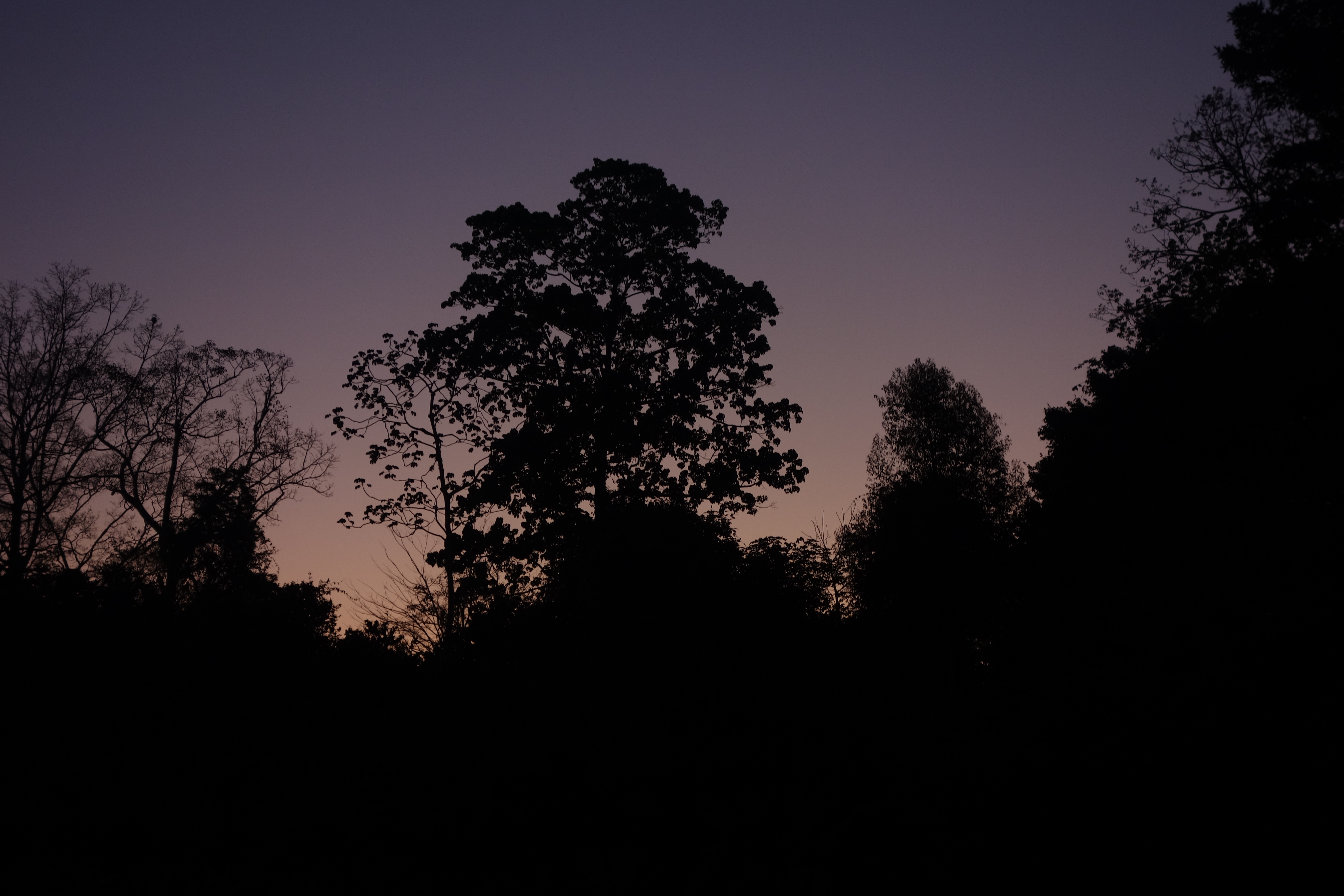
We are to rise tomorrow at 4:45am to walk to the Sirena river and attempt to spot the tapir, Corcovado’s seeming star attraction. At 3am, all and myself are awakened by the sound of someone duct taping who knows what that couldn’t have been duct taped the night before. We fail to see a tapir at the river and return at 6:30am for breakfast.
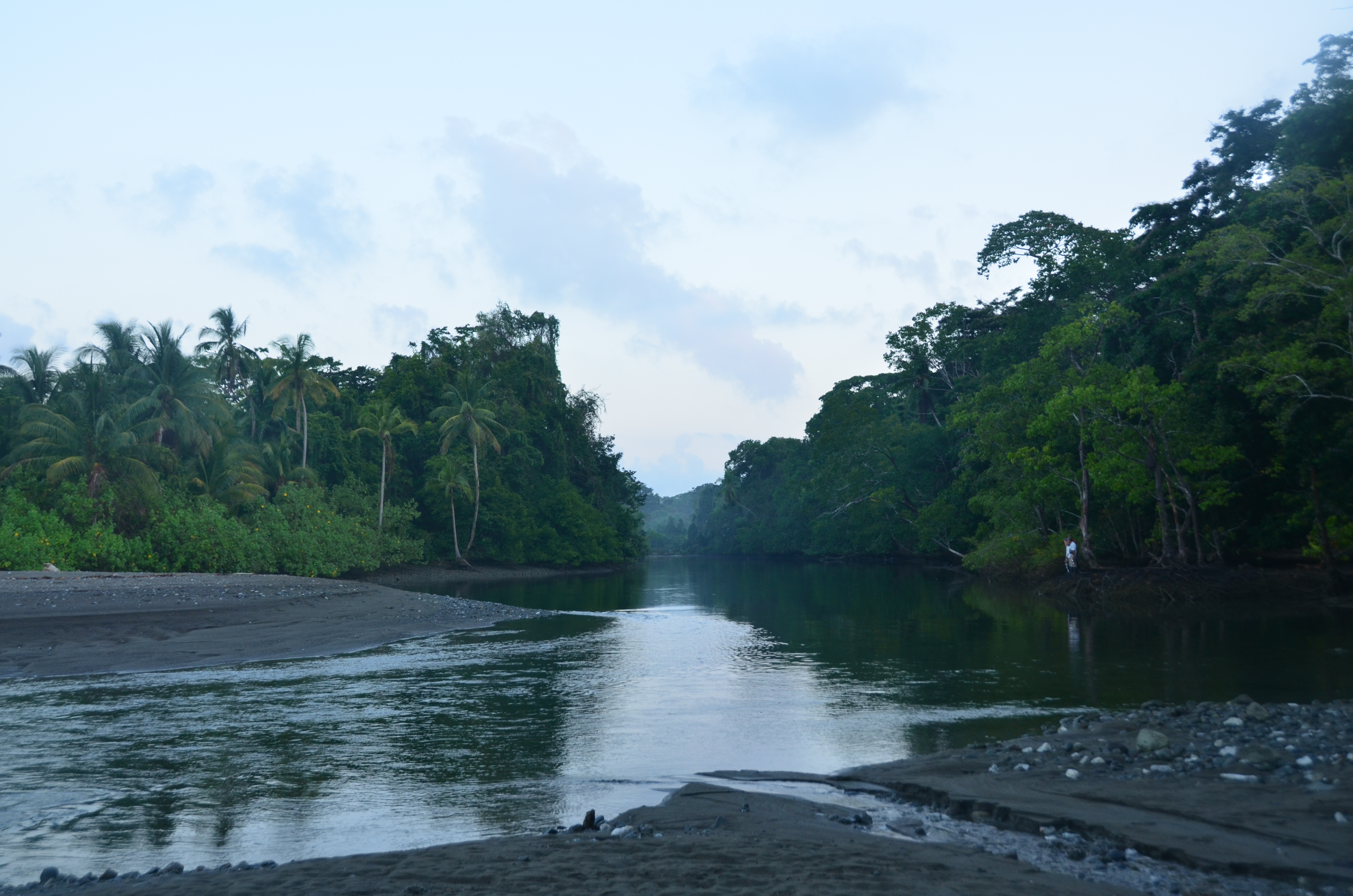
We head back out at 7:30 and quickly find one sleeping as they do during the day after being active all night.
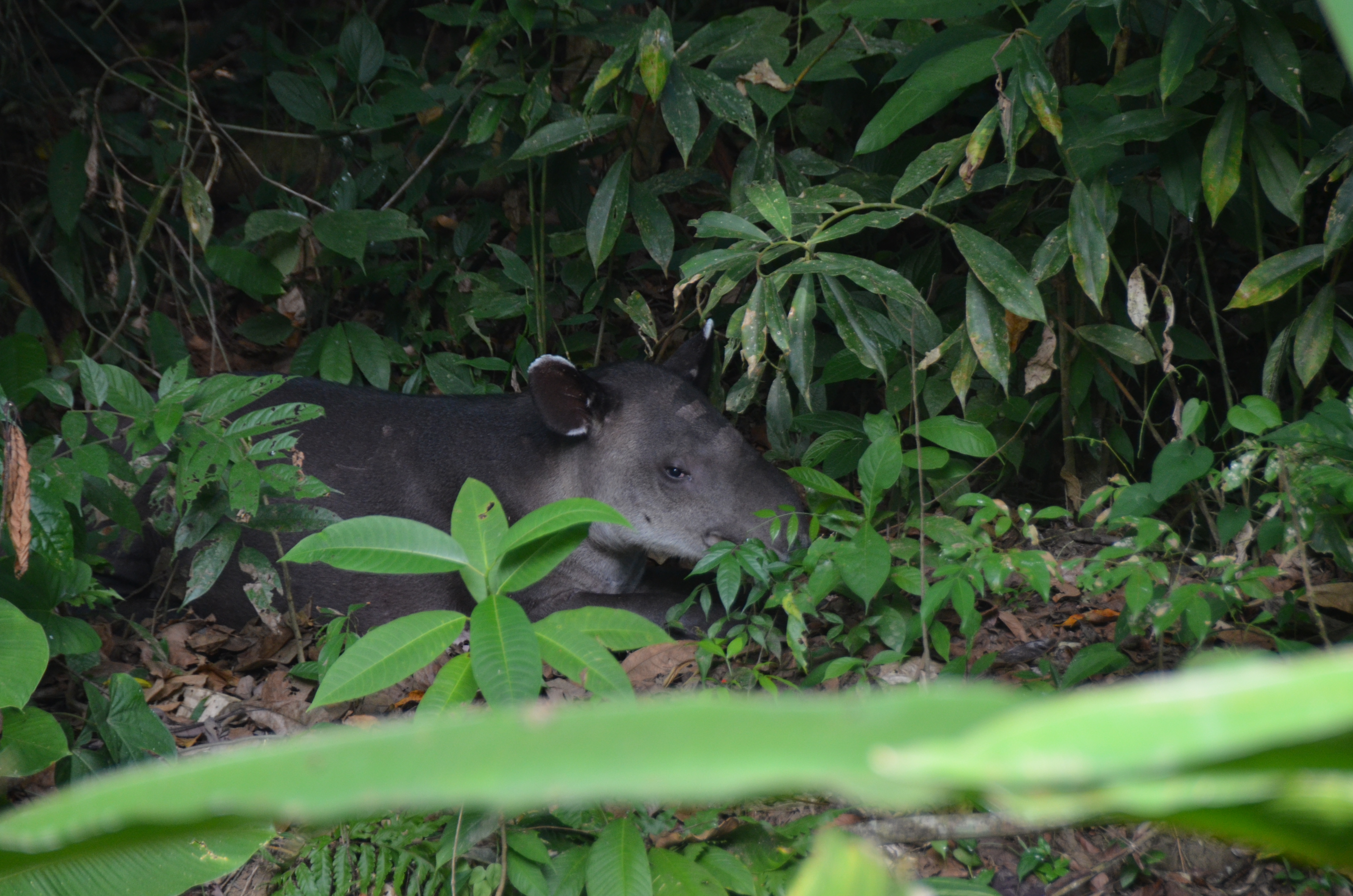
That box ticked, we head off down another trail to find the sloth and baby that have been inhabiting a group of trees for two weeks, We fail on our first attempt, but spot toucans further down. Another assures us the sloth is still there, so we head back and find them on the second attempt. We take blurry photos.
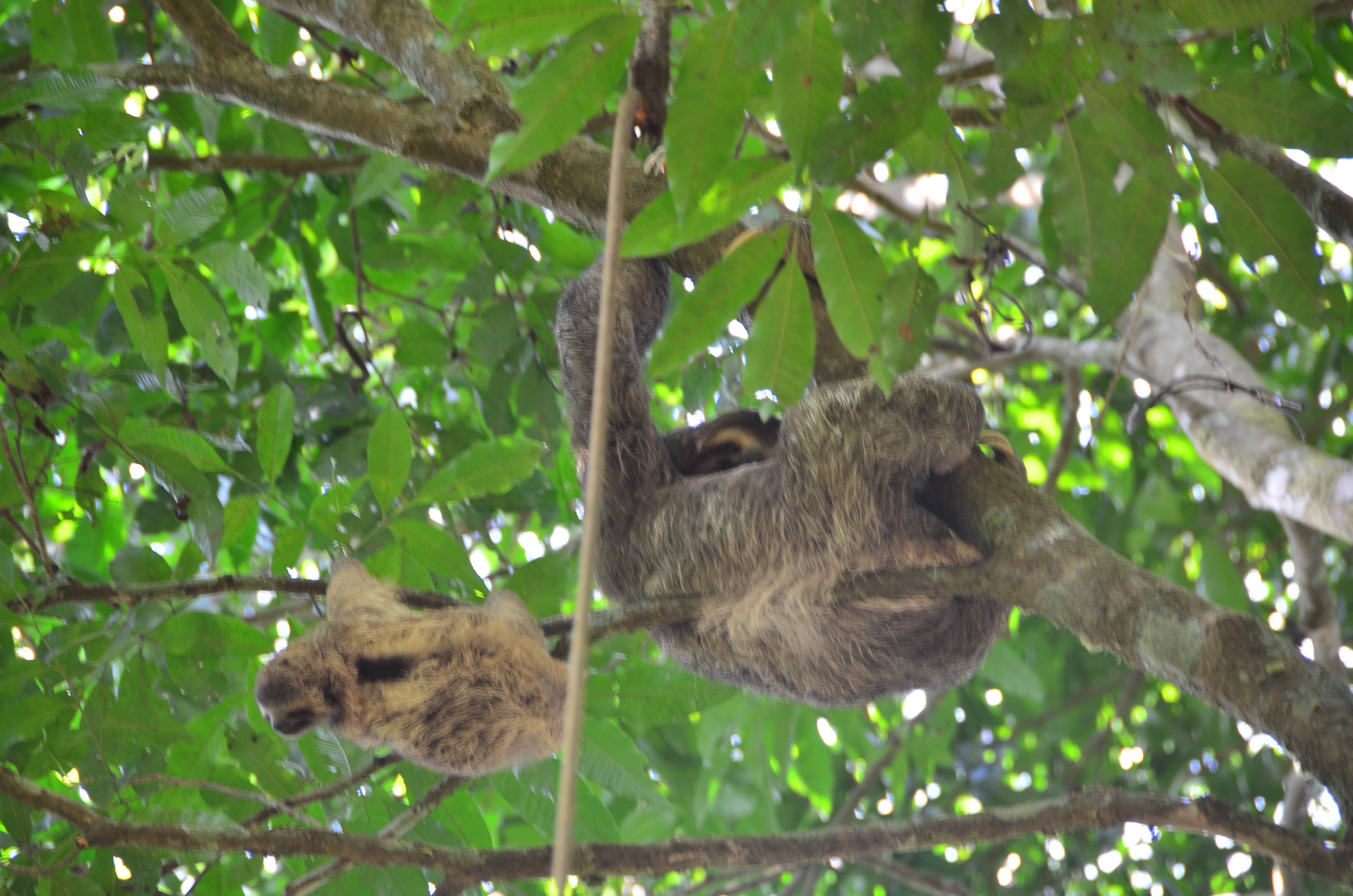
After lunch Jose takes us to his secret swimming hole, on one of the rivers. It involves de-shoeing and walking barefoot 100m down a gravelly and rocky riverbed. My feet badly macerated the day before when I let them stay wet too long, a rookie jungle mistake, are still sensitive and tortured by the sharp stones and hot sands at the end. Jose and his brothers have built an illegal campsite here that he shares with us. The swimming hole is at least eight feet deep at the end of a broad riffle. We swim. We eat lunch, and Jose and Rachel start to discuss India. Rachel was born in Thailand, and has been all over. Jose says he could never go back to India, the poverty and the caste system disgust him. He says the same of Bolivia and it’s treatment of the poor and China and it’s totalinarianism, and comments that it’s ironic that the biggest capitalist country in the world depends for its economic well-being on the biggest communist country in the world, and it’s millions of all-but-in-name slaves. Rachel disagrees about India and says there are many beautiful things there, such as life and death right there together, and seeing poverty can teach us to appreciate what we have. That sentiment is a big no-no to me as the poor are people and people are an end in themselves and not a lesson for the rest ofus to learn. But I say nothing. I always stay out of these discussions when I don’t know the people involved well enough to noit worry about offending them. And they are not angry with each other, just two adults having a conversation about a topic on which they disagree. We swim again to calm down, and later spot a baby tapir with it’s mother, which makes everyone happy.
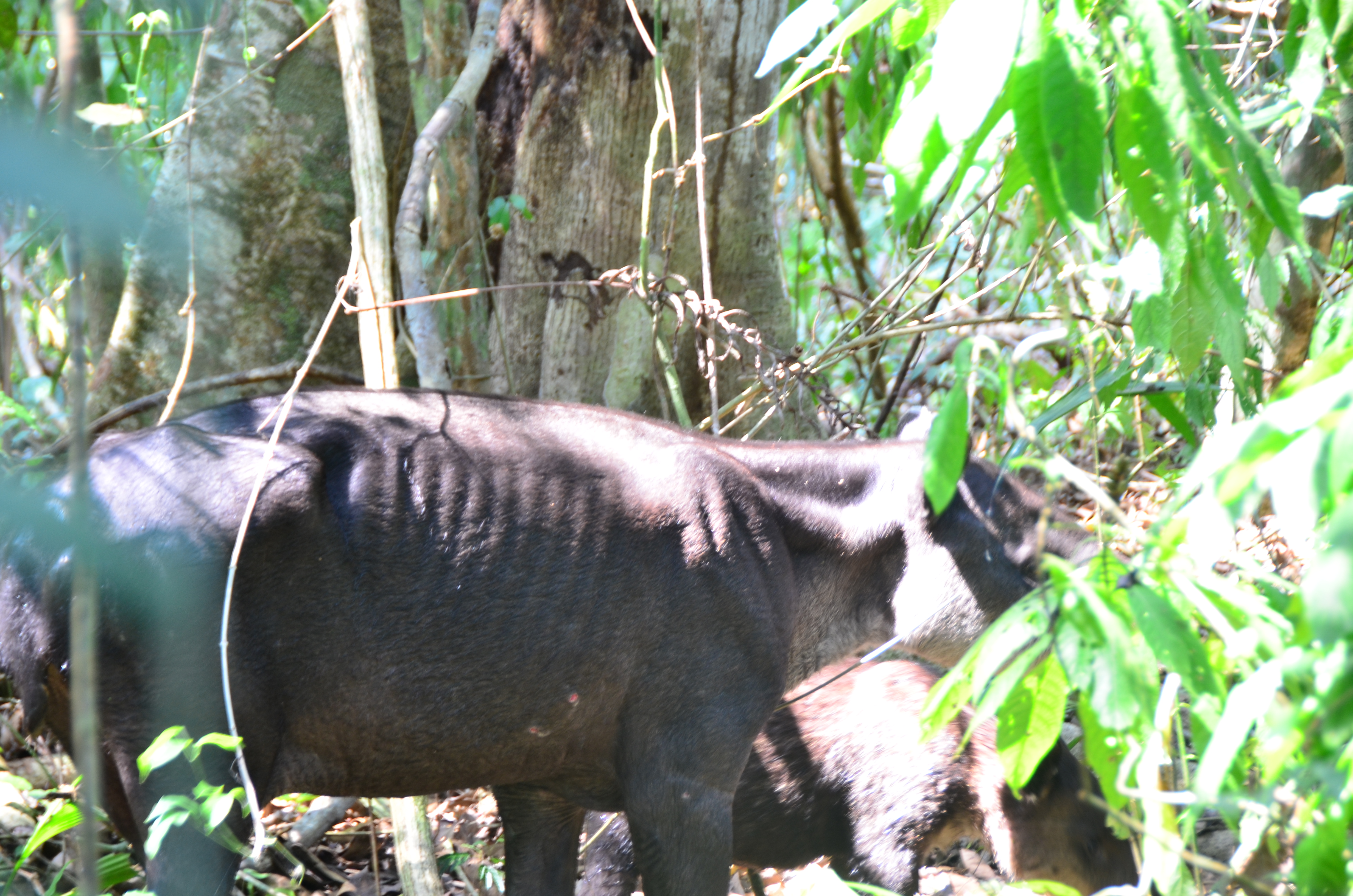
After we retuned to the station, Rachel, a yoga teacher, gave Jose a lesson in Sun Salutation A, and all was forgiven, if anything needed to be.
The next day is a 5am start, to catch low tide at the Rio Claro crossing and beat the heat. There is not much to say about this hike. There is lots of walking on sand along the Pacific Ocean, in sand filled shoes, which is miserable. There is lots of walking in shadeless sun, which is miserable. There was little wildlife. It is not for nothing that one stretch is called “Playa Sala Si Puede” – Get Out if You Can Beach.
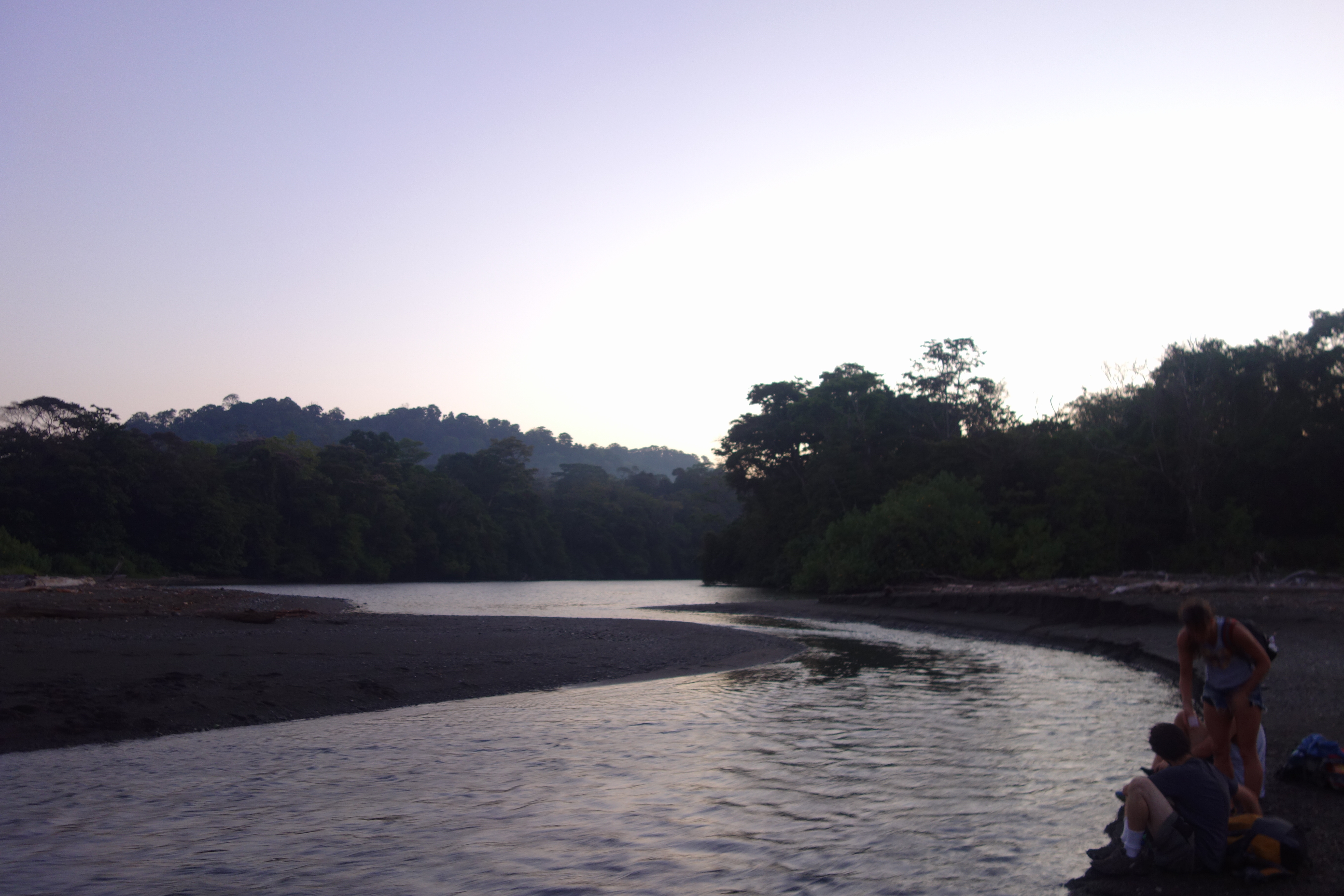
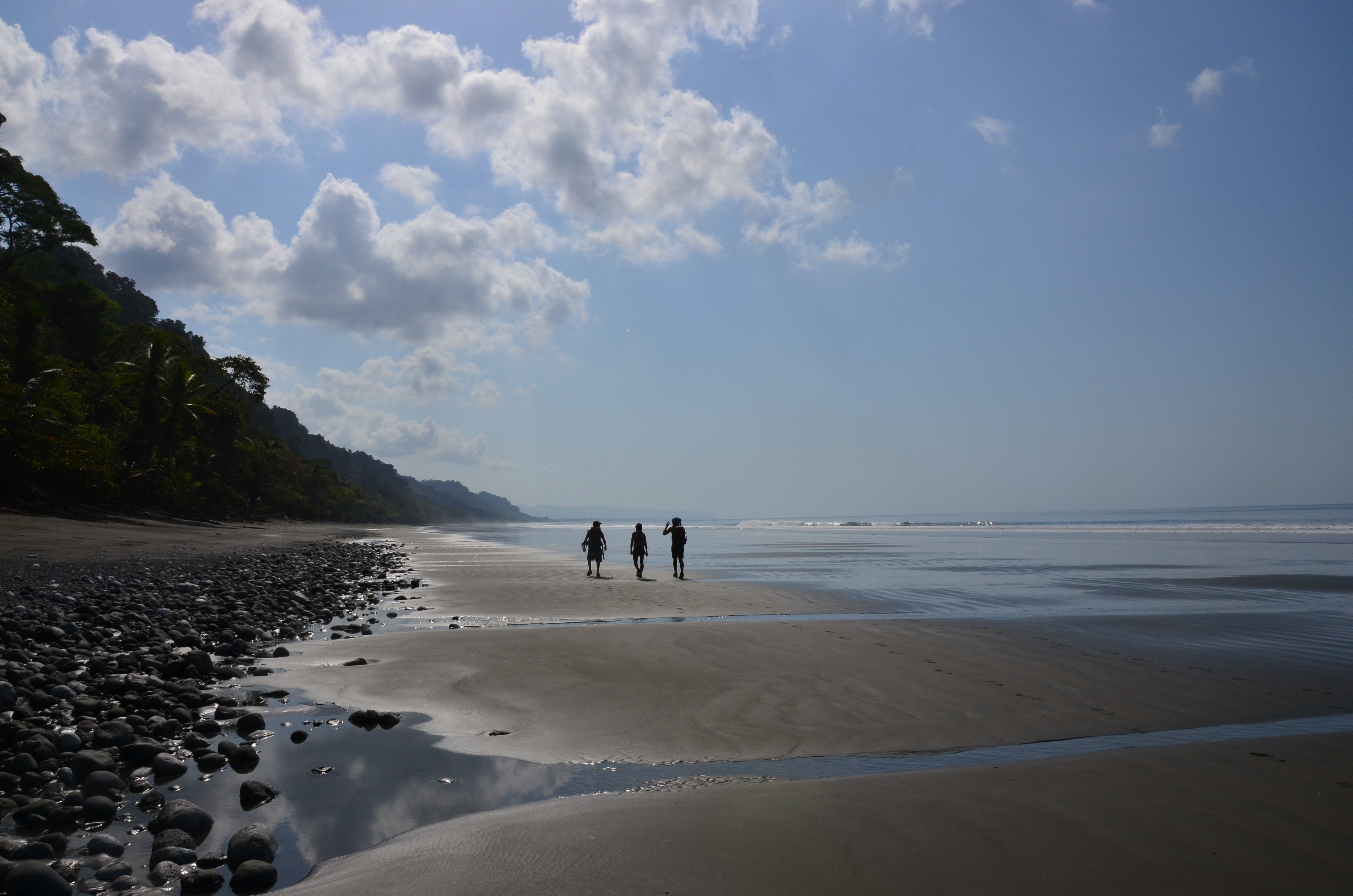
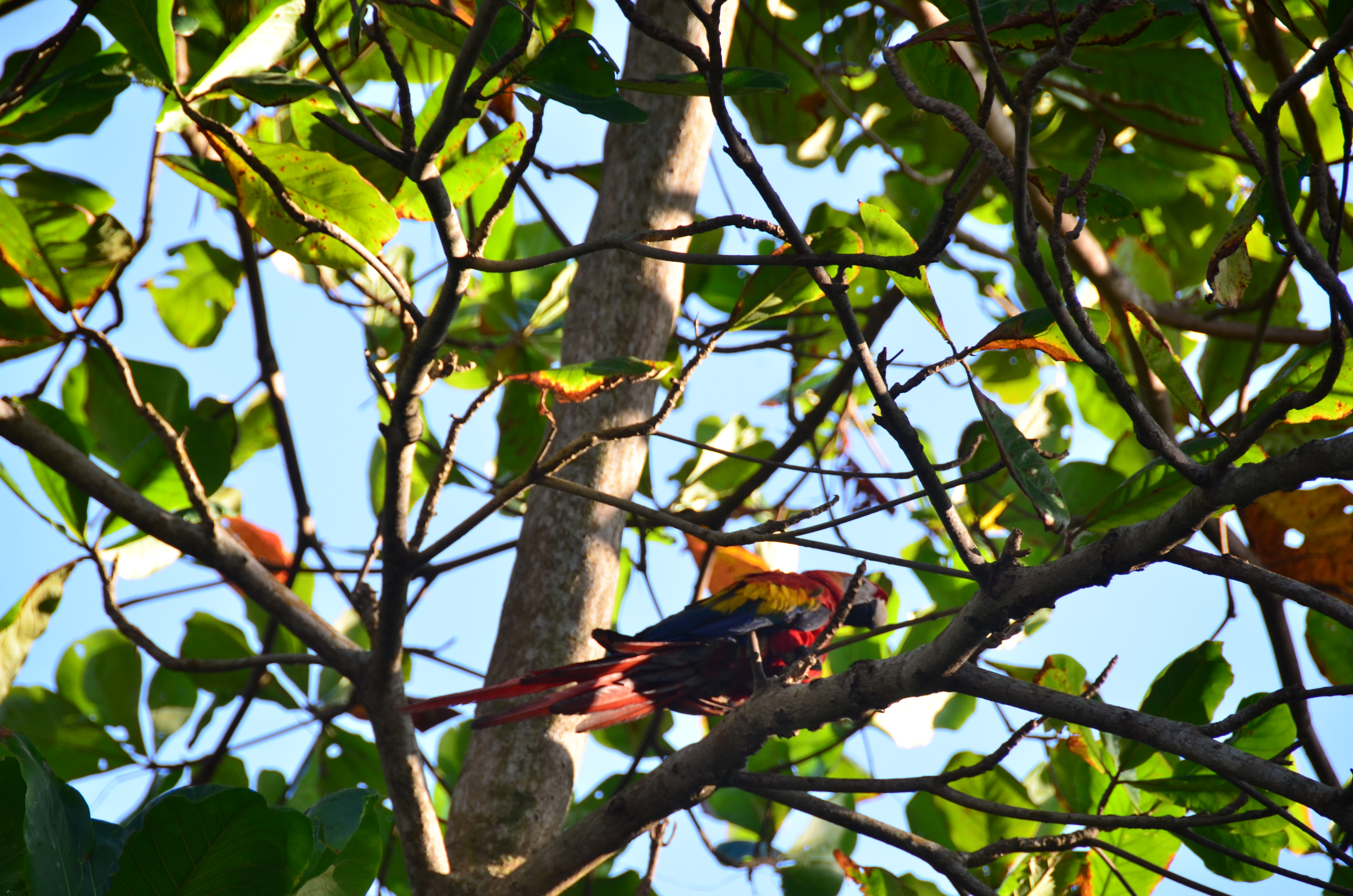
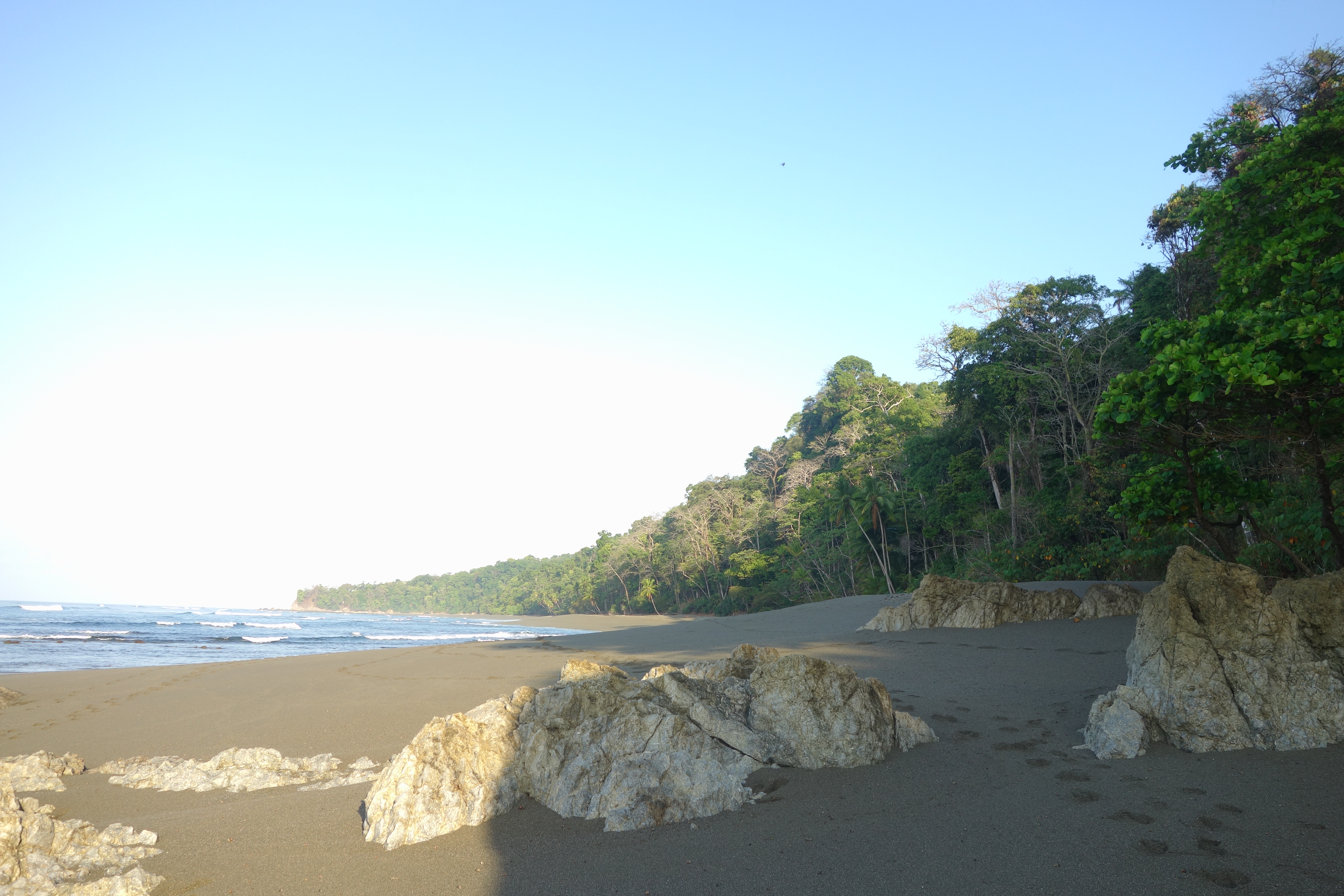
Jose set a hard pace. A good time is 6 hours. We did it in 4:15. We sat at the Refugio at the end of the trail, waiting for our colectivo and toasted celebratory 9:15 am beers . Two men rode up on a motorcycle and one hopped off and offered the proprietor freshly caught fish. They agreed on a price, weighed the fish and then went to gut and clean them . A small dog hovered and yipped in anticipation of the entrails. The ocean crashed 100m away. The sun was hot and the breeze was hot, but we sat in the shade sipping our beers. We could smell the woman starting to cook the fish, but our colectivo would be here before she was done. We sat like this for an hour before our bumpy ride back into town where we parted ways.
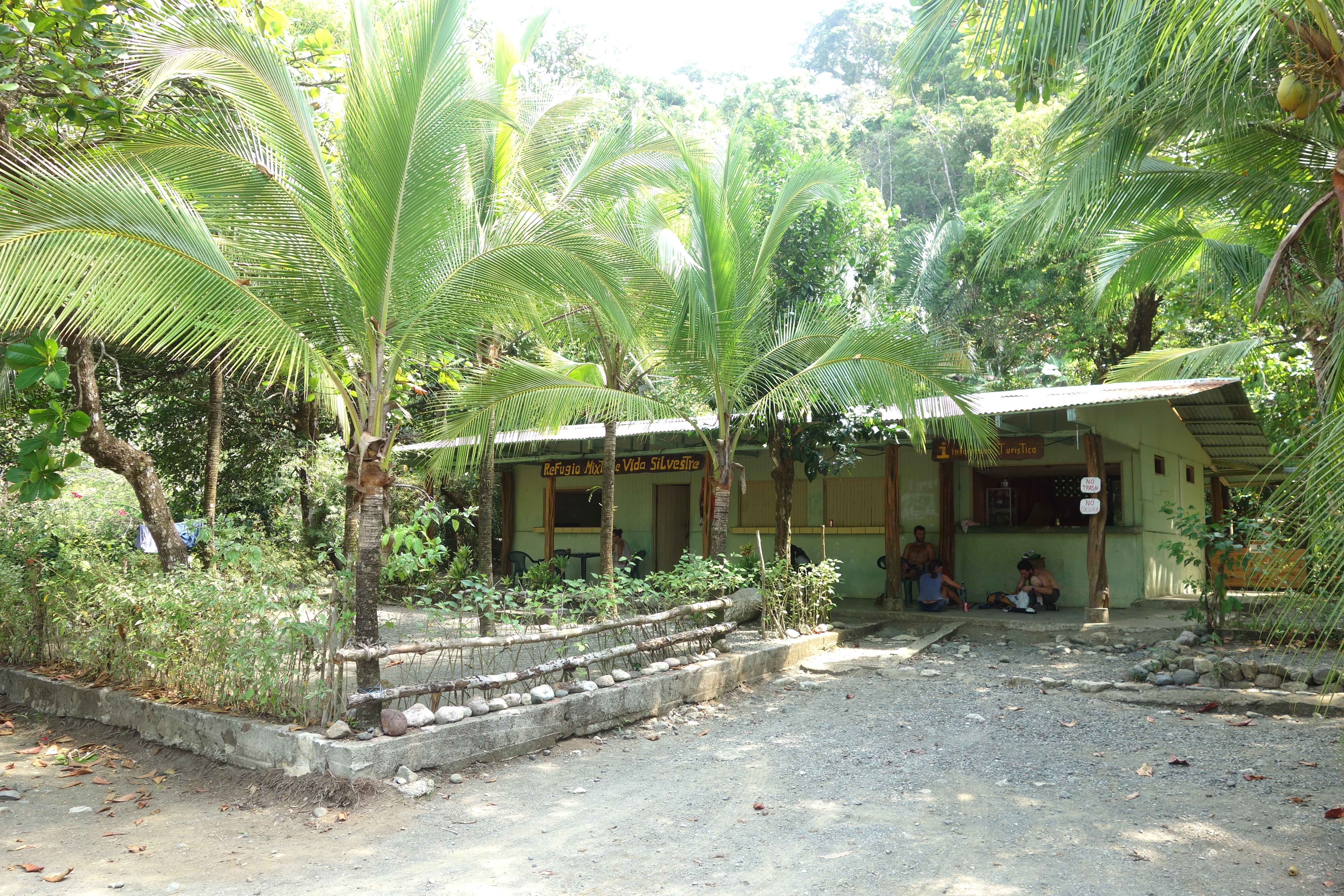
2 thoughts on “Corcovado National Park”
Comments are closed.

It must be fascinating to encounter all these new and interesting places and things.I’m enjoying reading you blog. Keep well and safe. Luv, aunty Patte
Hey Jim, Very interesting blog. We enjoy reading about all your adventures. Stay safe. Beautiful pictures. Love You Aunt Carol